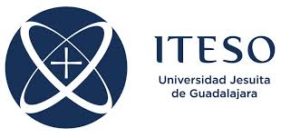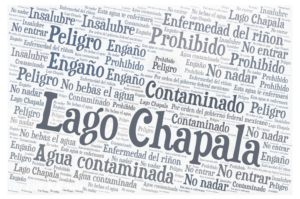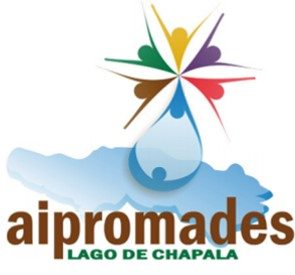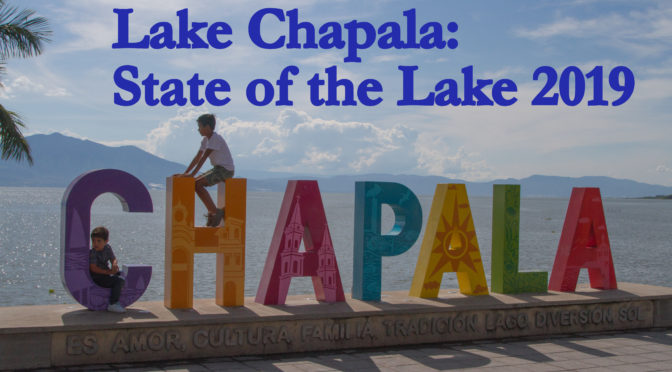The following is an analysis of Lake Chapala – State of the Lake in March 2019. It is a comparison of observations and conclusions published by primarily three different sources.
In 2004, a politician in Illinois who was threatened by Obama’s run for an Illinois Senate seat, unleashed an unsubstantiated rumor: Barack Obama was not born in the United States.
On June 12, 2008, Obama’s website posted an image of his birth certificate. The post stated this manufactured fictional story “isn’t actually about that piece of paper – it’s about manipulating people into thinking Barack is not an American citizen.” Of course, Donald Trump became a vociferous perpetuator of this fiction. On April 27, 2011 the White House released a certified copy of his Birth Certificate from the State of Hawaii. It wasn’t until September 16, 2016, that Trump conceded publicly; “President Barack Obama was born in the United States.” Yet, for some, 15 years after the birth of this discredited narrative, it continues. Lake Chapala has a similar challenge today. Let me explain.
Lake Chapala: Outliers and Fringe Theory
In scientific circles, there is a concept known as fringe theory. This term is used to characterize “an idea or viewpoint which differs from the accepted scholarship in its field. Fringe theories are ideas which depart significantly from a prevailing or mainstream theory. A fringe theory is neither a majority opinion nor that of a respected minority. Fringe theories are said to be “peddled by a small band of staunch supporters, but not necessarily without merit.” Translation: Fringe theories are outliers. From a statistical standpoint, outliers are considered observation points that are distant from other observations.
When one examines the body of scientific studies completed in the Lake Chapala basin, outliers and perpetuators of fringe theory become apparent. These include Dr. Todd Stong and a local business owned by expats, Focus on Mexico. Stong has been the author of Focus on Mexico’s annual State of the Lake report. For the past 16 years he resides part of the year in Ajijic. Focus on Mexico is a for-profit company based in Ajijic that provides a week long seminar for primarily expat retirees considering relocation to Mexico a half dozen times a year. Focus on Mexico also receives a percentage of real estate commissions for any FOM attendees who purchase real property in the Lake Chapala area from Lake Chapala Real Estate, recommended agents, and developers associated with Focus on Mexico. I attended their FOM seminar in October/November 2018. Frankly, it is a superb program.
Dr. Stong has also been a featured speaker at the annual meeting of the Lake Chapala Society, where he expounds about the quality of the Lake – and brazenly downs a glass of filtered lake water for the crowd. In 2019, this specific report was not produced by Dr. Stong, but a staff member of Focus on Mexico, a writer on their website, and an alumnus of the FOM program. Bette Brazel resides in Ajijic and is a presenter at the FOM seminar. I met her once, briefly. She is an incredibly talented and gifted woman and cherishes her life in Ajijic.
It should be noted that Dr. Stong has provided professional water related treatment and quality assessment consulting services around the globe. It’s been his life’s work. He is widely respected. Yet, in the field of the physical sciences disagreements between professional practitioners remains a reality.
In response to my book Lake Chapala – Beneath the Surface regarding the environmental and public health hazards that currently inhabit the Lake Chapala basin, I received an email from Dr. Stong. In this email he identifies his thesis that the matter of water quality in Lake Chapala is a matter of quantity versus quality. His position is not accepted by other professionals in the field.
Gabriel Vazquez-Sanchez is the General Director of AIPROMADES – the Intermunicipal Association for the Protection of the Environment and Sustainable Development of Lake Chapala. He is based in Guadalajara. Vazquez-Sanchez stated in October 2018 that the public and the Mexican government must focus on Lake Chapala’s water quality versus its storage capacity and level (quantity). According to Vazquez-Sanchez of AIPROMADES, this focus on the lake’s water quantity vs. water quality has led to a myopic focus on the former and has obstructed the essential efforts required to begin to address the tangible issues here: “the sanitation of the basin and its tributaries.”
In his email to me, Stong cites a report he prepared for the governor of Jalisco a few years ago where Stong “advised him to keep the lake level above 40%. Due to political control issues of the 4 states above the lake along the Lerma River, the lake will never be filled in perhaps the coming 50 years. Thus, in reality the fallback position has been to maintain sufficient water in the lake to adequately dilute any substances that might challenge Mexican and WHO limits.” He goes on to add: “the lake has not been full for over 20 years, the water in the lake does not have pollutant levels that exceed WHO limits as long as its volume is over 35% full.”
In his Lake Chapala: State of the Lake 2018 report, Dr. Stong states:
- “Lake volume and quality is good.”
- “90% of the causes of childhood kidney disease in some of the small towns on the south side of the lake are now identified and lake water is generally not one of the causes.”
- “Fish from the lake are safe to eat.”
- “The water quality meets all standards for recreation/swimming and fully qualifies as a raw water source treated for 3 million users in Guadalajara each day. This applies as long as the lake is at least 35% full.”
- “Lake Chapala is not a polluted mass of water. Based upon government test data and many years of my own directed laboratory study I know of no mineral element in the lake that exceeds international limits.”
- “The bottom line is that the lake is in an acceptable condition and it’s a satisfactory raw water source for Guadalajara once it is treated. Dr. Stong has attested to the lake water’s quality by drinking it at public lecture sessions after he has filtered and disinfected it before the audiences.”
- “I know of no mineral element in the lake that exceeds international limits.” A report from the XVI World Water Congress in 2017 indicates an average coliform level of 55 points, implying a water of medium quality that should be purified prior to distribution and consumption.”
The new Lake Chapala – State of the Lake 2019 report was authored by Focus on Mexico’s Bette Brazel. Like I’ve said, Dr. Stong’s 2018 representations above can be accurately characterized as those of an outlier and are challenged by the conclusions of other researchers. His representations in his previous Focus on Mexico State of the Lake reports differ substantively from the vast body of extensive scientific research that has been completed in the Lake Chapala basin.
Stong 2018, Focus on Mexico 2019 vs. ITESO 2018: A Comparison
Let’s examine each of Dr. Stong’s written representations from his 2018 report, the March 2019 report from Focus on Mexico (hereinafter FOM 2019) against the conclusions of a recent longitudinal study publicly released in December 2018.
An often overlooked source of information when examining the condition of Lake Chapala is the transcript of the Latin American Water Council proceedings held in Guadalajara in October 2018. The genesis for much of the testimony provided during this court hearing came from this study:
Institute of Technology and Higher Studies of the West (ITESO)

2018-08: The title of the research endeavor is: Report of Water Quality Data Analysis of Lake Chapala. Tlaquepaque, Jalisco: The authors of this study are: Sánchez-Torres, Juan D.; Nuño-Sánchez, Saúl A .; Martinez-Alvarado, Juan C .; Ruiz-Cruz, Riemann Sánchez-Torres, J.D .; Nuño-Sánchez, S.A .; Martínez-Alvarado, J.C. and others.

A database was created by the ITESO team of researchers along with CONAGUA staff, based upon the information gathered by CONAGUA. The chronology of the origins of this data set was from November 21, 2012 to February 8, 2018.This database contains information generated by CONAGUA about the presence of various elements detected in lake water samples. The samples were obtained via some 34 monitoring stations located at different geographical coordinates in Lake Chapala. Here’s what this longitudinal study found in comparison to Stong’s seven central representations above in 2018:
- Water Quality?
Stong 2018: – Water quality is good.
ITESO 2018: The Lake is “Polluted.” It is “contaminated.” Lake Chapala does not meet any of the standards that protect the health of both people and ecosystems.
FOM 2019: “the health of Lake Chapala is neither as dire as some proclaim nor as benign as others assert.”
- Lake Water and Chronic Kidney Disease:
Stong 2018: Generally agreed -that Lake water is not one of the causes.
ITESO 2018: Did NOT address CKD in their study. However, the findings of the Latin American Water Tribunal in October 2018 speak for themselves: “In the community of Mezcala de la Asunción there is a registry of 11 renal patients, between children and adults, and 23 deaths have been registered due to renal failure. In San Pedro Itzicán, there is the highest rate in the world of kidney patients, according to the United States Renal Data System. In addition to kidney failure, in the population there are brain disorders, malformations, hearing and motor problems, and cancer cases, which although they can be caused by various factors, it cannot be ruled out that water is not a vector with a considerable incidence in this problematic reality.”
FOM 2019: “A full report on the high instance of kidney disease at the eastern end of Lake Chapala is beyond the scope of this publication. this is a complex problem with multiple causes.”
- Eating Fish from the Lake?
Stong 2018: Safe to eat.
ITESO 2018: “It can be interpreted that Lake Chapala does not meet any of the standards that protect the health of both people and ecosystems, in relation to the parameter priority of Fecal Coliforms (COLI_FEC). All stations maintain concentrations above the reference of Standard 001 that protects aquatic life.”
FOM 2019: “Mercury levels found in fish caught in Lake Chapala are similar to those found in other locations throughout the world.”
- Recreation/Swimming?
Stong 2018: The water quality meets all standards for recreation/swimming
ITESO 2018: “The water of Lake Chapala per se is not potable, and it needs a purifying process to eliminate these bacteria, because they are pathogenic. It can be said that the water of Lake Chapala contains Fecal Coliforms, and in particular, E-Coli in concentrations that may pose a health risk. Lake Chapala does not meet any of the standards that protect the health of both people and ecosystems.”
FOM 2019: “It is no longer advisable” (primarily due to obstructions beneath the surface of the water – not the documented pathogenic content of the water).
- Polluted?
Stong 2018: Lake Chapala is not a polluted mass of water.
ITESO 2018: The Lake is “Polluted.” The overall average of all measurements is 46.92 mg / L, which indicates the Lake is “Polluted”(Concentrations of Chemical Oxygen Demand obtained during the measurement period). “COD” measures organic matter caused by industrial residual water discharges. In that sense, this parameter officially relates water quality to industrial water discharges, and serves to indicate how affected the water of the lake is – by the aqueous waste of the industries with which it has some connection. The stations located within Lake Chapala show high concentrations. It can be said that the water of Lake Chapala contains Fecal Coliforms, and in particular, E-Coli in concentrations that may pose a health risk. Lake Chapala does not meet any of the standards that protect the health of both people and ecosystems.””
FOM 2019: “The particular pressures facing Lake Chapala are related to the aforementioned industrial and agricultural waste, dumping heavy metal and pesticide residue into the lake, and the lack of modern waste treatment plants. Currently, many towns and villages around the lake release waste water and sewage directly into the lake. The approximately 40 waste water treatment plants that are functioning are outdated and inefficient.”
- Condition of the Lake?
Stong 2018: Acceptable. It’s a water quantity issue…
ITESO 2018: According to the classification of CONAGUA and with these averages, the water quality of Lake Chapala in relation to the Chemical Oxygen Demand It goes from “acceptable” to “contaminated.“
FOM 2019: “the health of Lake Chapala is neither as dire as some proclaim nor as benign as others assert.”
- Noxious Elements:
Stong 2018: There is no mineral element in the lake that exceeds international limits.
ITESO 2018: Arsenic, Fecal Coliforms, Chromium, Biochemical Oxygen Demand (BOD), Chemical Demand of Oxygen (COD), Escherichia Coli, Mercury, Ammoniacal Nitrogen, Nitrates, Nitrites, Nitrogen, Organic, Total Nitrogen, Orthophosphate, Phosphorus, Lead, pH, Total Dissolved Solids (TDS) and Solids Total Suspended (SST): The results of the present analysis showed that the monitoring stations, in general, have obtained higher than average concentrations and are located throughout all the periphery of the Lake. It also realizes that all parameters, except Lead, they have been detected in all the monitoring stations. The samplings show that in Lake Chapala, arsenic has been detected.
FOM 2019: “lake water tested for levels of heavy metals is within international norms.”
Conclusions?
Draw your own.
In 1980, The U.S. Congress approved the CERCLA Act (Comprehensive Environmental Response, Compensation & Liability Act). This legislation empowered the EPA to designate certain areas as Super Fund sites; sites where federal intervention is essential to clean them up, identify responsible parties, involve communities in the work, and return these areas to a state of acceptable environmental health and ongoing use. Mexico must do the same with Lake Chapala.

Focus on Mexico’s Bette Brazel has written (quoting an expat residing in Oaxaca): “the best thing you can do when adjusting to Mexico is to “keep your eyes open and your mouth shut for the first few years.” Unfortunately for Ms. Brazel, the proverbial cat is out of the bag regarding the public health and environmental hazards that inhabit the Lake Chapala basin. You see, expats considering any region for prospective relocation for retirement require full and forthright disclosures of the array of public health, safety, and environmental risks that are current realities. For those same reasons, these disclosures, particularly for a company – and their representatives – whose profits depend upon attracting expats to Lake Chapala must be made prior to relocation. For the Lake Chapala region, Come on down and “keep your eyes open and your mouth shut for the first few years” just doesn’t cut it anymore. To attempt to minimize the documented public health and environmental hazards Lake Chapala represents by comparisons to the Ganges River in India and the general observation that water is polluted across the globe is, needless to say, misguided and terribly unfortunate. A 3 day environmental awareness festival once a year in Chapala, or pinning your hopes the inept, underfunded, and corruption riddled government of Jalisco is also simply more of what is not required. It’s when we attempt to dilute the magnitude and severity of the multi-dimensional realities of Lake Chapala’s hazards that we add momentum and magnitude to the problem, not its solution.
As identified herein, the conflicting representations (all produced within the last 24 months) regarding the public health, public safety and environmental hazards that inhabit the Lake Chapala basin – as well as the global concerns over Mexico’s current and future stabilty – all demand the transparency and forthrightness whose absence has impaired Mexico for generations. It still does. Trust is decimated by anything less than full disclosure. So is the initiation of the deployment of the requisite remedies that must be put in place to resolve the challenges that confront us. Lake Chapala is a superb example of just this reality. Undue delay does not serve the interruption of environmental and public health hazards well. In fact, it fuels it.

Gabriel Vazquez Sanchez, General Director of the Intermunicipal Association for the Protection of the Environment and Sustainable Development of Lake Chapala (AIPROMADES) in Guadalajara says:
“We must stop talking about water quantity and begin addressing the water quality issues. The current public health and environmental situation in Lake Chapala is an emergency that should be addressed at all levels of government.”
Fringe or fact? – Fact or fiction? – Obfuscation? – Differences of opinion? – Nuancing a Narrative? Spin? Conflicts of interest? It’s a daily struggle in life to separate the wheat from the chaff. For the Lake Chapala basin, I just hope it doesn’t take another 16 years, as it did in Obama’s case, to distinguish between the two, arrive at a consensus and move forward with the essential, comprehensive remedies where the truth demands and deserves to be revealed – and shall be our guide to a better future for all.
Voice from the crowd: “Hey AMLO! Are you listening?”




